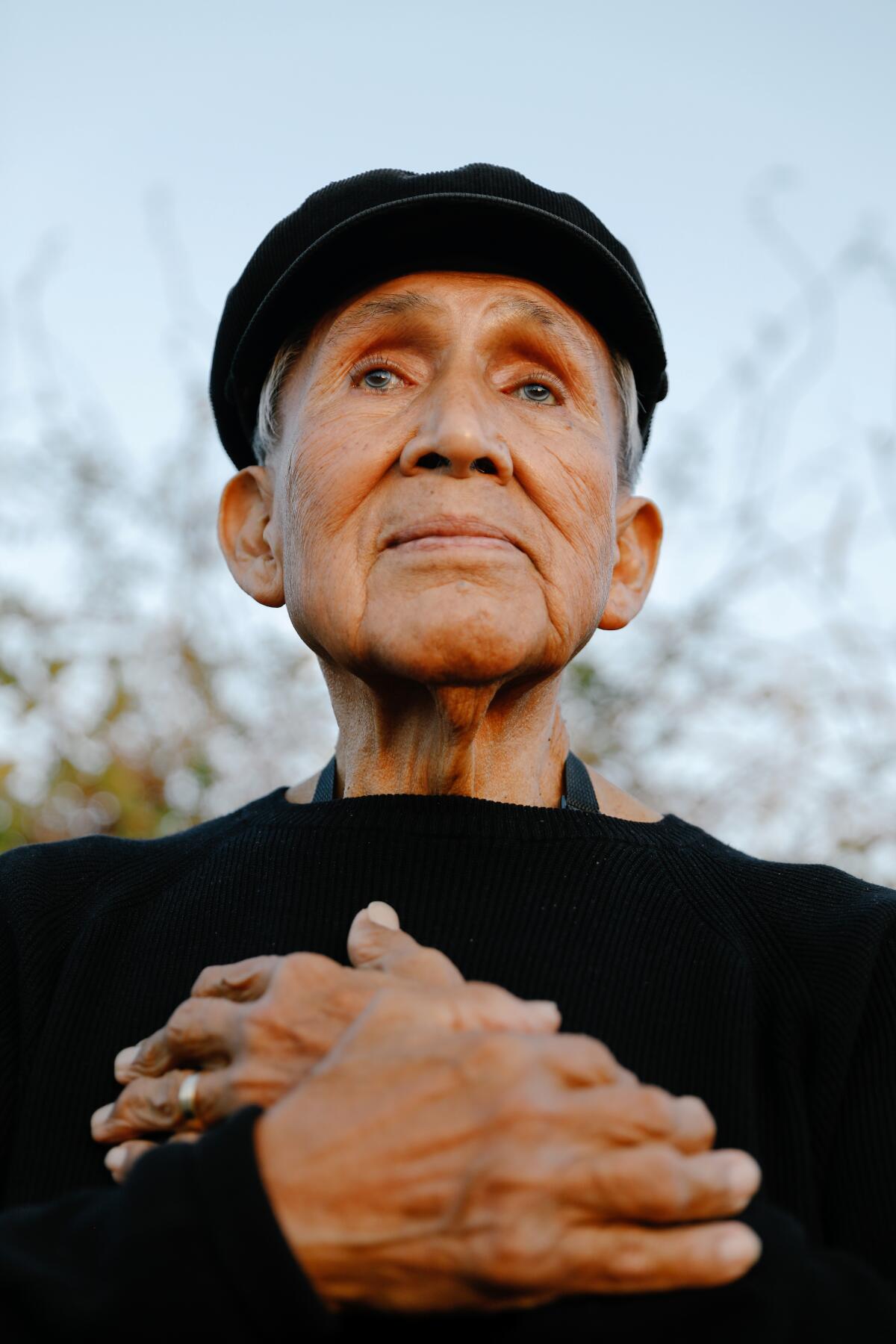Op-Ed: Indigenous languages in California are facing extinction. Why I’m helping to save them

- Share via
The root of my fascination with Indigenous languages can be traced to a rock band from Finland my brother listened to called HIM. When 12-year-old me heard them being interviewed in Finnish, I found their speech oddly captivating. With a quick Google search, I landed upon some basic phrases, and I amused myself by trying to say them.
My path from there to working to preserve Indigenous languages a decade or so later is straighter than you might think.
Learning languages, I discovered, could lift me out of my teenage depression. I found solace and joy in high school by asking my Armenian algebra teacher or my Dutch geometry teacher how to say certain words in their respective languages. As a sophomore in high school, I tried to learn about 10 languages at once.
Still, I managed to graduate from my high school in Riverside without ever being taught about the Indigenous dialects spoken in the region. Friends told me.
Since then, I’ve learned that at least 100 Indigenous languages are spoken in California, making the state one of the most linguistically diverse regions in the world. And every one of those languages is facing extinction, a discouraging fact that caused my curiosity about them to spike.
In 2017, I sought out the Dorothy Ramon Learning Center in Banning, which promotes Indigenous culture, and met a teacher who became my mentor, Ernest Siva. He is regarded as the last fluent speaker of Serrano, spoken by the tribe of the same name that lived in the San Bernardino Mountains and other areas in Southern California.
Through him, I became closer to the Serrano language and passionate about learning and preserving Indigenous languages. That includes a keen interest in Gabrielino — the first language of Los Angeles — spoken by the Gabrielino-Tongva. Its extinction was hastened by the cruelty of the mission system, mainly through genocide and a boarding school system that punished the children for speaking Indigenous languages.
John Peabody Harrington, a linguist and anthropologist, spent 50 years crisscrossing California and the West, documenting Gabrielino and other Indigenous languages before they were lost. When he died in 1961, he left behind a trove of hard-to-decipher notes that have been used to help unlock Indigenous languages. I’ve studied his work to deduce the similarities between Serrano and Gabrielino.
Even though I am a math major at Cal State San Bernardino, I seem to have a natural affinity for Indigenous languages. English was mainly spoken in my home while I was growing up in Riverside, but I’ve heard Spanish throughout my life from my grandparents and great-grandparents.
After many people noticed languages were disappearing along with the eldest generation of speakers, a language revitalization movement began in California about 30 years ago. Many tribal groups are also attempting to preserve their languages, and more people are showing enthusiasm for awakening Indigenous languages. It makes me confident that many of California’s lost languages will be spoken again.
About 10 years ago, the Chukchansi people from the Central Valley pledged $1 million to Fresno State to help preserve their language, an effort that included creating a dictionary. About the same time, Cal State Marcos received a gift from the Pauma Band of Luiseño Indians in northern San Diego County that was used to create a video game to help Pauma’s young learn Luiseño.
More recently, Cal Poly San Luis Obispo named a new student housing complex yakʔitʸutʸu, which means “our community” in the Northern Chumash language. Its seven residential halls are named after Chumash villages in California’s Central Coast region.
Every effort, no matter how small, helps resurrect the lingual history of our state.
For three years, I have worked to preserve Serrano, teaching preschoolers through adults. It’s often difficult to make the language interesting to the younger generation, partly because many of the sounds required to speak Serrano are hard for English speakers to duplicate.
My main goal is for my students to realize how important learning a native language is to their identities, how it can connect them to their past. And maybe some of them will be inspired to join me in the language revitalization movement. My enduring fascination with languages has helped me into adulthood. It remains one of my main mechanisms for coping with my chronic depression. Concentrating on grammar and vocabulary that is foreign to me transports me to the place where the language is spoken.
My quest has also brought me closer to a great-grandfather I never knew, Carmen Cisneros, who was descended from the Mixtec, a Mexican Indigenous group. He died in 1954, more than 50 years after leaving behind his country to come to California with his wife, Dolores. He also left behind his language.
When his older brother died in 1915 after being hit by a train in Indio, my great-grandfather stopped speaking in his native tongue. And since Dolores spoke only Spanish, his language eventually slipped away.
One day I hope to reclaim the language my great-grandfather spoke.
Mark Araujo-Levinson is a language preservation specialist with the Morongo Cultural Heritage Department and a senior at Cal State San Bernardino.
More to Read
A cure for the common opinion
Get thought-provoking perspectives with our weekly newsletter.
You may occasionally receive promotional content from the Los Angeles Times.










